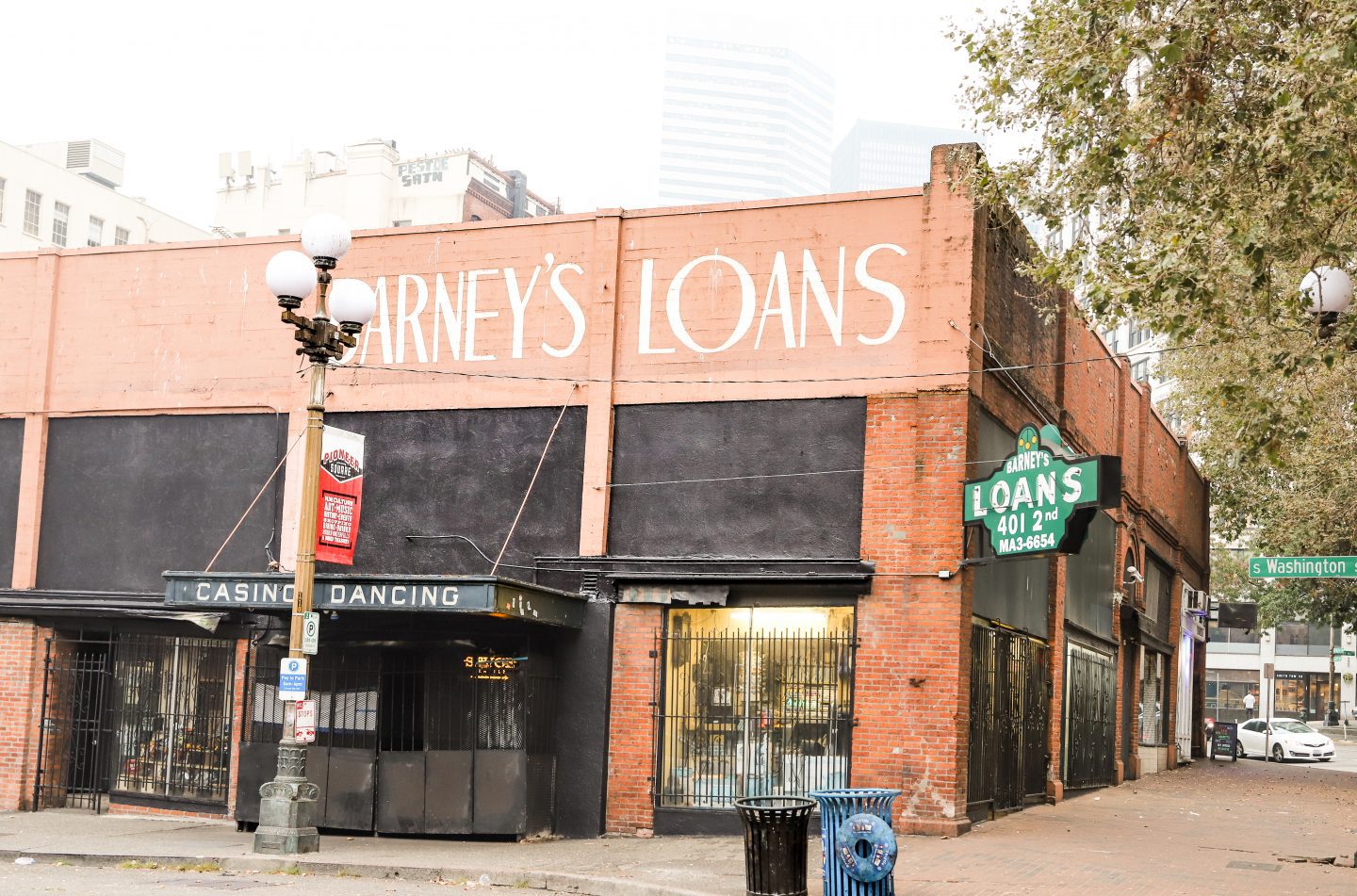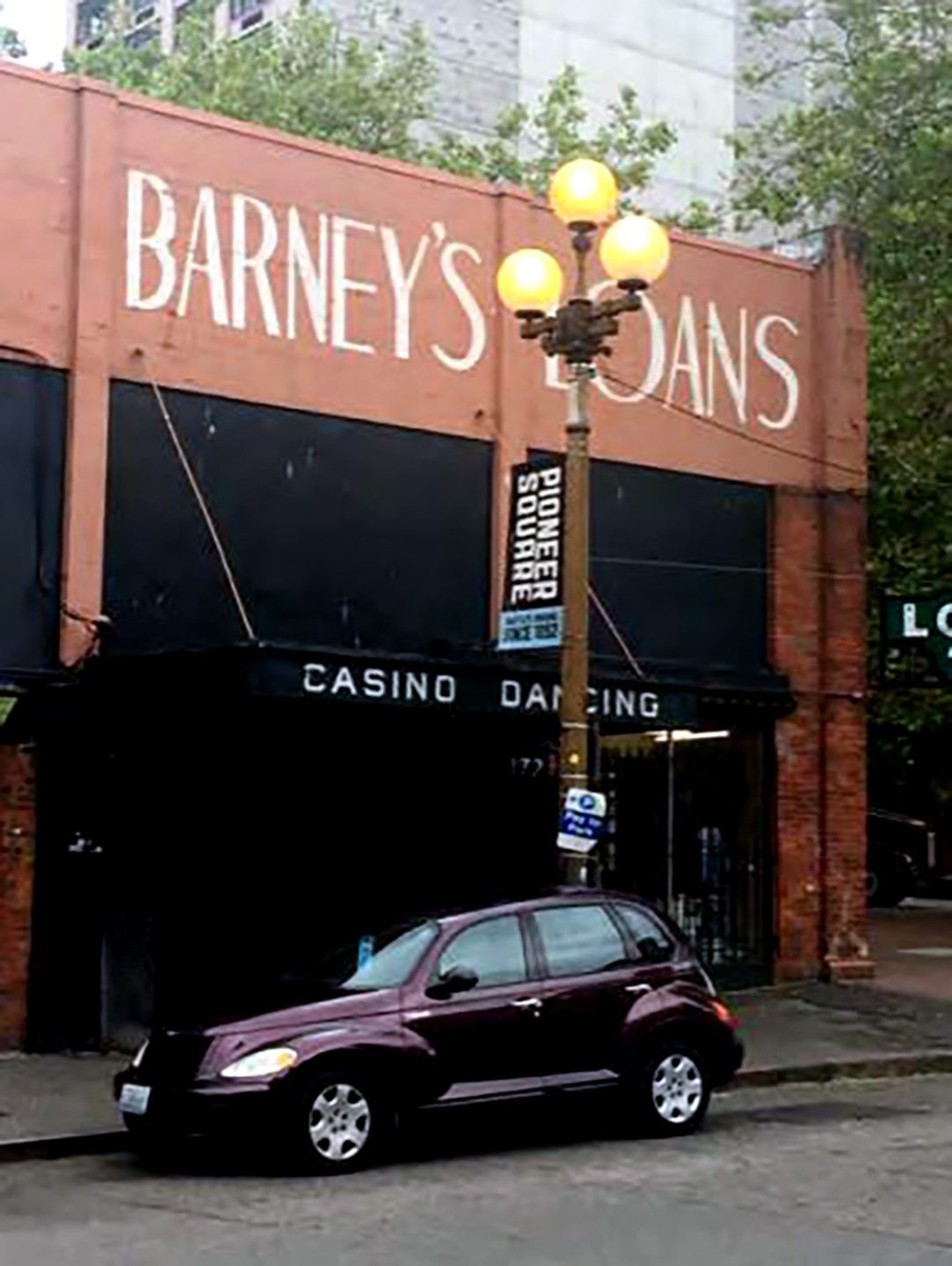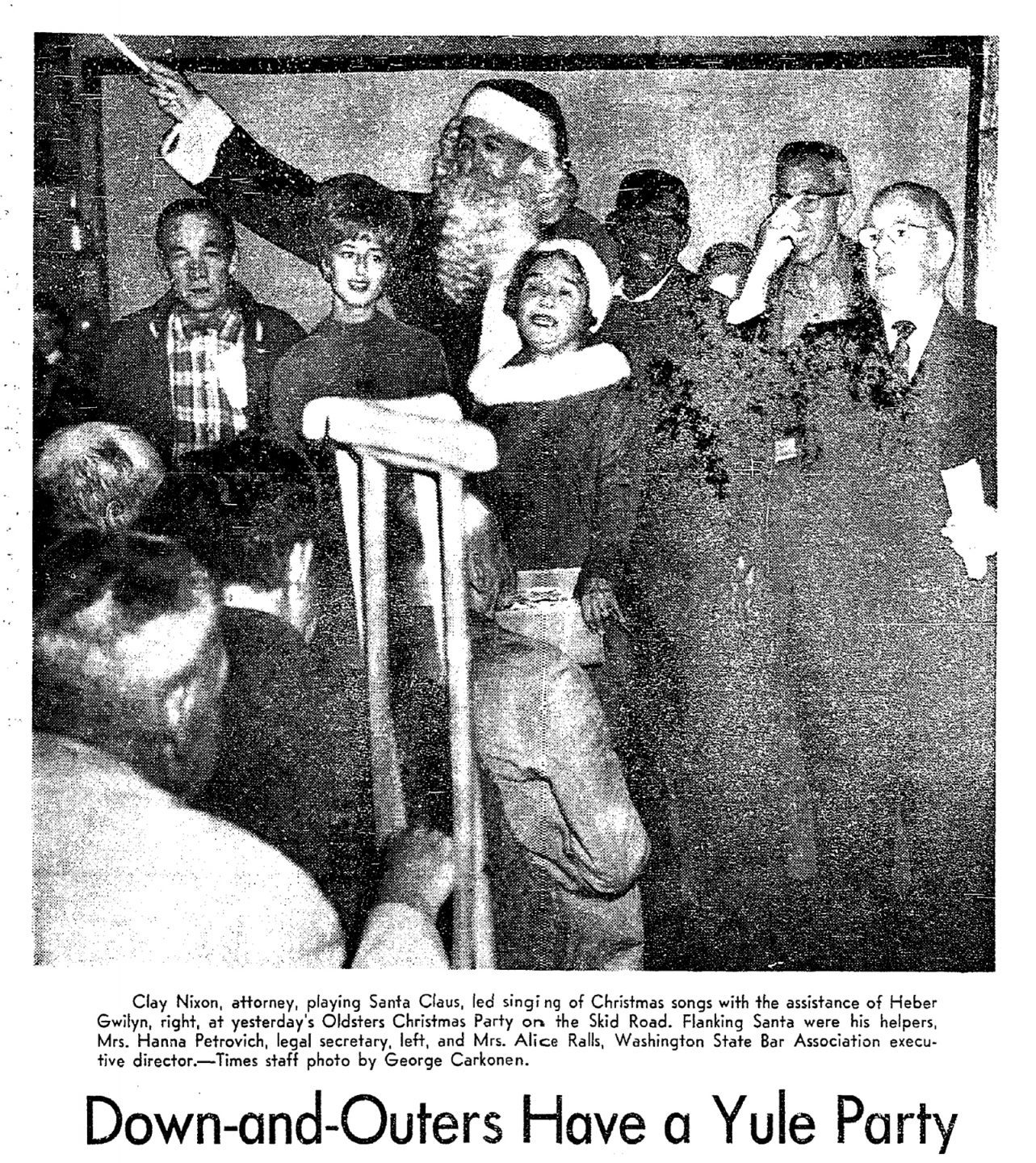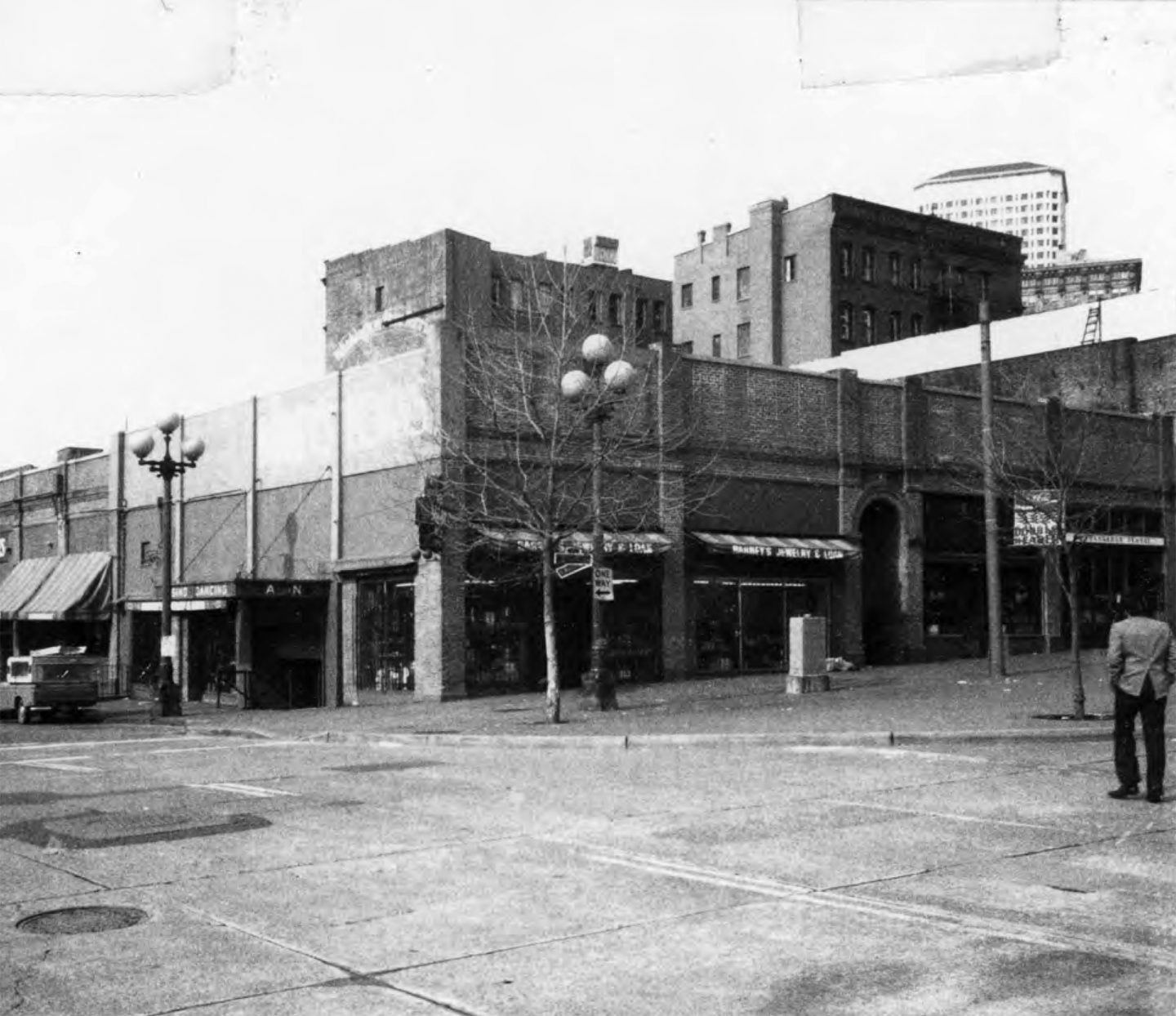The Casino/Madame Peabody’s Dancing Academy for Young Ladies
172 S Washington Street
-
The Casino/Madame Peabody’s Dancing Academy for Young Ladies
172 S Washington Street
It sometimes pays to be among the first, and when it comes to having a place in Seattle history, The Casino hits the jackpot. Located in a basement, The Casino was one of the city’s first LGBTQ+ community spaces. It began in the 1930s as a daytime card room and pool hall frequented by Filipino customers, then card and pool tables, still available to play, were pushed to the side to transform the space into an after-hours club for LGBTQ+ patrons. They lined up at the doors with six packs of beer in brown bags. The underground space helped to anchor Pioneer Square as the center of the LGBTQ+ community, a role that only grew as the neighborhood took on a new identity.
At some point, the space allowed same-sex dancing. When this happened isn’t clear, though of course police were being paid off to allow it. As its role changed from social club to dance hall, its named changed too. In the 1950s people started calling it “Madame People’s Dancing Academy for Young Ladies;” others knew it as “Madame Peabody’s School of Dance for Young Ladies.” Some folks just cut to the chase and named it “The Dance.” While the 611 and The Golden Horseshoe allowed dancing in the 1960s, that was aboveground. The Dance was below ground, an architectural quality that appears to have made enough difference to cops that they permitted dancing there sooner. What made a difference to customers was that you could dance there at all, a rare distinction that caused its reputation to spread from Los Angeles to Vancouver, B.C.
Not everyone liked what they heard. In the mid-1960s, Washington still had an anti-sodomy law (consensual sodomy became legal in June 1975), and in a 1965 case challenging the law, a witness described the scene in The Casino/The Dance: “Men dressed in elaborate wigs and gowns … women with mannish haircuts, slacks and jackets. Inside there were approximately five to seven hundred gyrating humans.” No wonder people on the West Coast knew about it.
Continue south on 2nd Avenue S to our next stop.



